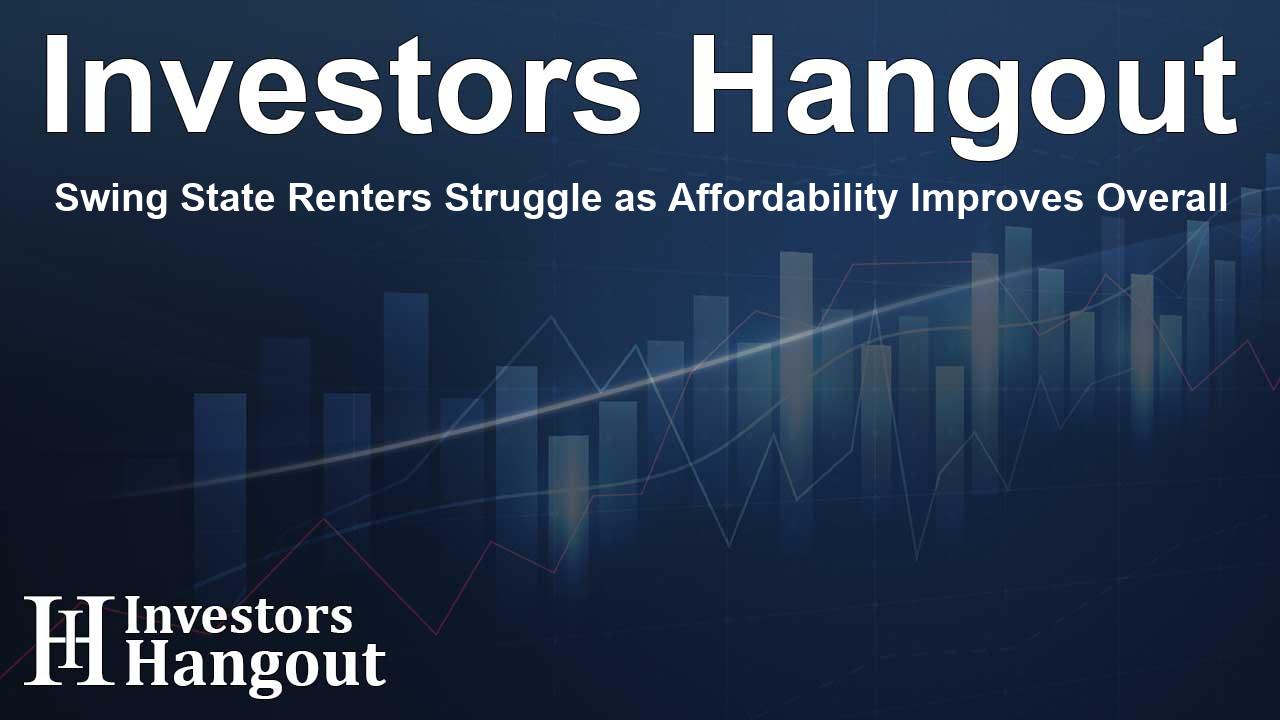Swing State Renters Struggle as Affordability Improves Overall

Understanding Rent Affordability for Swing State Residents
Renting a home has always been a significant concern for many households, especially in swing states where the vote can go either way in elections. In a recent report by Redfin, it was revealed that the typical renter household in these critical areas earns approximately $50,267 per year. This figure is notably $10,365 less than the $60,633 required to afford the median-priced apartment. This disparity highlights a persistent challenge for renters in a rapidly changing economy.
Current Economic Landscape
In practical terms, residents in swing states earn around 17.1% less than what they need to comfortably cover their housing costs. Although this shortfall represents a sizeable challenge, it does signal some improvement compared to the previous election cycle, wherein renters faced a 20.6% shortfall. The stark reality of financial strain is alleviated slightly, but many renters still grapple with the burden of rising living costs.
Year-on-Year Comparison
Reflecting on last year’s statistics, the situation appeared even grimmer, with renters earning about 22.1% less than required to meet housing expenses. The gradual improvement in rental affordability can be attributed to several factors, including a rise in household incomes alongside a stagnation in rental prices. This shift implies that while challenges persist, there might be a silver lining on the horizon for renters.
What Influences Rental Affordability?
The report emphasizes how the rental market dynamics in swing states have evolved due to various socio-economic factors. The pandemic-induced homebuilding boom has led to an increase in apartment availability, which in turn has helped push back against rapidly rising rents. Specifically, despite the overall asking rents in these states having increased by about 23.8% since the last election, they still remain below the increased income levels, which have surged by a staggering 29.3%.
A Closer Look at Rent Changes
While the raising tide of rent prices grows, recent figures show a 1% decline in asking rents compared to last year. This is a notable contrast to the past circumstances, where prices consistently climbed faster than incomes, causing more households to feel the strain. Rent prices, when balanced against income trajectories, tell a fluctuating story of both challenge and optimism.
Variability Across Swing States
Focusing on individual states shows varying degrees of improvement. For instance, Arizona emerged as the frontrunner in rental affordability progress, with residents needing only 2.6% more than what they currently earn to afford median rent. Notably, this marks a drastic improvement from a 12.4% shortfall recorded during the last election. Such changes are exciting indicators that affordability can indeed shift positively under certain economic conditions.
Interestingly, while Arizona's rental situation has vastly improved due to a significant income increase and a slowdown in rent hikes, other states, like Michigan, tell a different story. Here, rental affordability has worsened, with households earning 16.3% less than they need to afford housing. This incrementally serious situation correlates with a marked rise in asking rents, showing that while some states are thriving, others are facing mounting challenges.
Challenges Still Persist
Despite overall improvements, many renters still struggle to secure affordable living options. Redfin's Chief Economist Daryl Fairweather states that swing state voters' decisions in upcoming elections are deeply intertwined with their experiences surrounding the housing crisis. Strains are particularly felt among younger renters, who often find themselves in precarious financial situations.
Case Study: Pennsylvania
Pennsylvania stands out with the most severe affordability crisis, as the median renter household earns an estimated $49,168 yet requires a hefty $69,880 to afford a typical apartment. This imposing gap underscores the fact that housing affordability remains a critical issue. Households in Pennsylvania are expected to allocate an alarming 42.6% of their income simply to cover rent, making it challenging to sustain a quality life.
The Path Forward
With the impending presidential elections, the need for robust housing policies is more pressing than ever. It is crucial for politicians to address affordable housing and implement effective solutions that align with current economic realities. In the meantime, organizations like Redfin continue to provide valuable insights into market trends and conditions, which can help inform policy-making and improve living standards for renters.
Frequently Asked Questions
What factors contribute to the rental affordability crisis?
Factors include rising rents outpacing income growth, increased demand for housing, and economic shifts stemming from events like the pandemic.
Which swing state showed the greatest improvement in rental affordability?
Arizona showed the largest improvement, with a significant increase in median incomes and a decrease in the income shortfall.
How do economic conditions affect renters in swing states?
Economic conditions such as job growth and wage increases significantly impact renters' ability to manage their housing costs.
Why is rental affordability important for upcoming elections?
Rental affordability is critical because it influences voters' decisions based on candidates' policies regarding housing and cost-of-living issues.
How can renters find more affordable housing options?
Renters can explore various resources, including local listings, government assistance programs, and non-profits focused on housing affordability.
About The Author
Contact Ryan Hughes privately here. Or send an email with ATTN: Ryan Hughes as the subject to contact@investorshangout.com.
About Investors Hangout
Investors Hangout is a leading online stock forum for financial discussion and learning, offering a wide range of free tools and resources. It draws in traders of all levels, who exchange market knowledge, investigate trading tactics, and keep an eye on industry developments in real time. Featuring financial articles, stock message boards, quotes, charts, company profiles, and live news updates. Through cooperative learning and a wealth of informational resources, it helps users from novices creating their first portfolios to experts honing their techniques. Join Investors Hangout today: https://investorshangout.com/
The content of this article is based on factual, publicly available information and does not represent legal, financial, or investment advice. Investors Hangout does not offer financial advice, and the author is not a licensed financial advisor. Consult a qualified advisor before making any financial or investment decisions based on this article. This article should not be considered advice to purchase, sell, or hold any securities or other investments. If any of the material provided here is inaccurate, please contact us for corrections.
